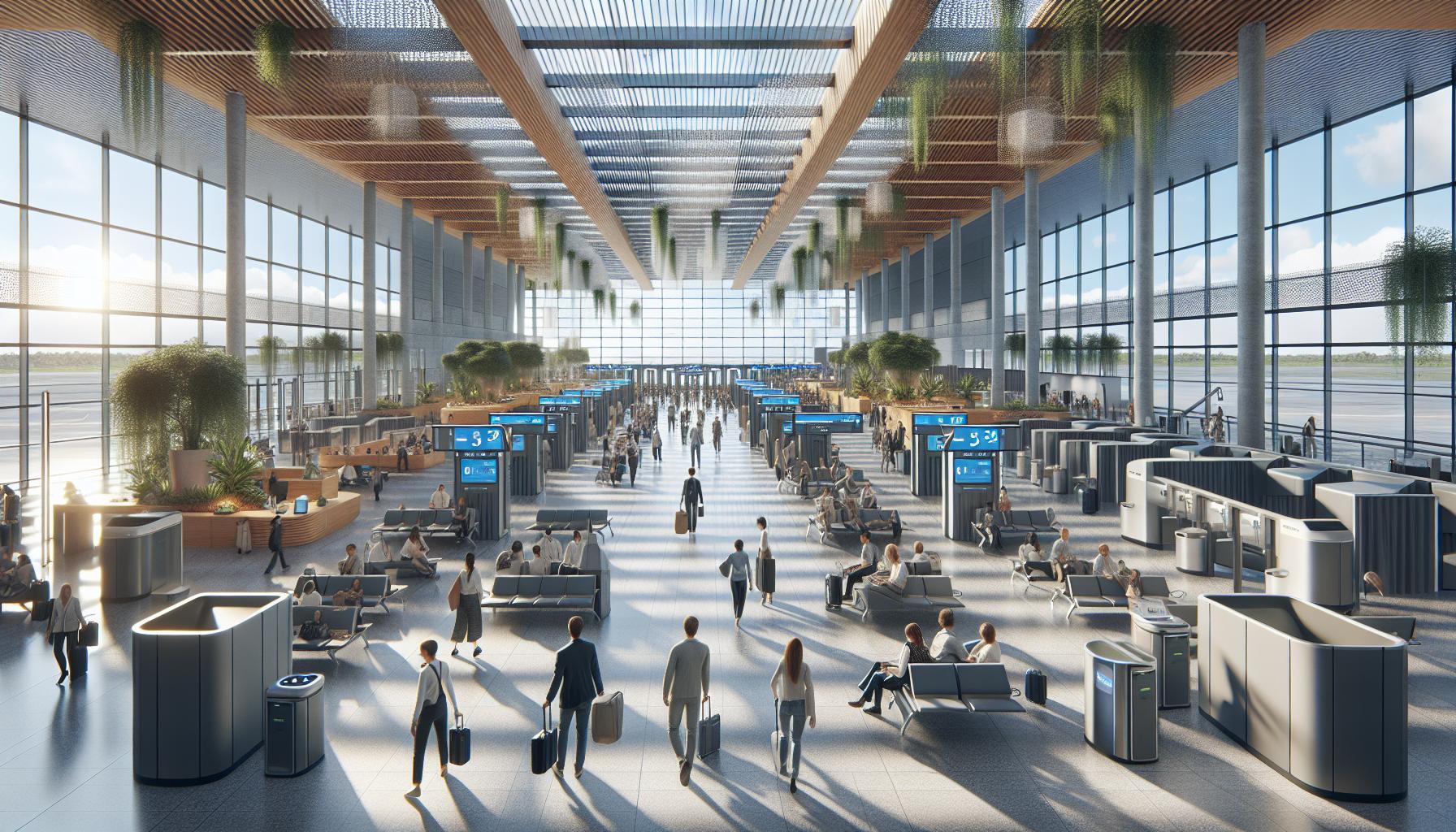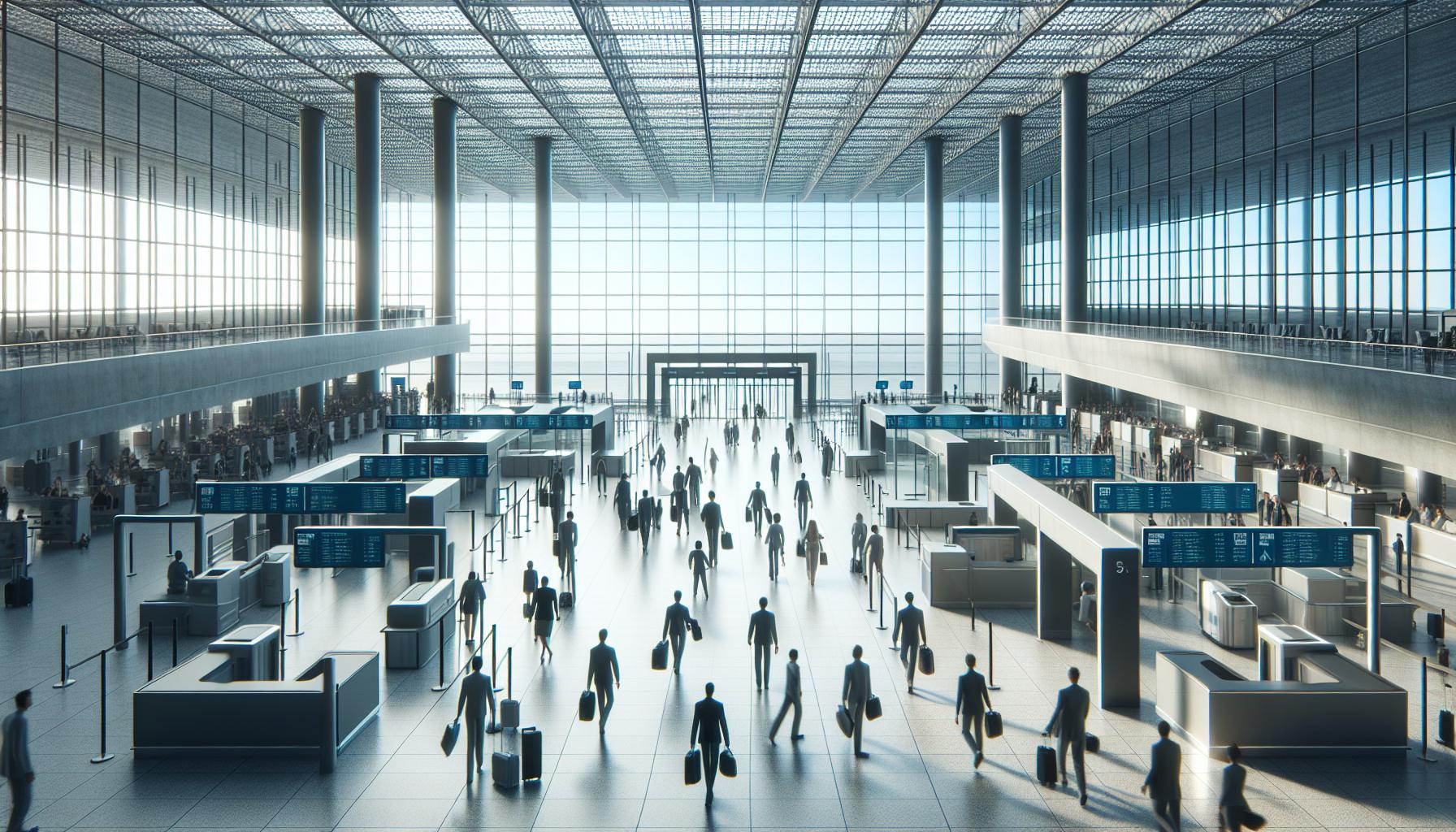When it comes to architectural design, the Transportation Security Administration (TSA) might not be the first thing that springs to mind. Yet, they play a crucial role in shaping the spaces where millions of travelers pass through daily. Imagine a world where security checkpoints are as welcoming as a cozy coffee shop—well, that’s the dream, and TSA architectural design is working towards it.
With a blend of functionality and aesthetics, TSA architects are redefining how we experience travel. They’re not just designing walls and lines; they’re crafting environments that balance safety and comfort. So, buckle up as we explore how innovative design can transform the often-dreaded airport experience into something that’s not only secure but also surprisingly pleasant. Who knew security could be this stylish?
TSA Architectural Design
TSA architectural design prioritizes the traveler experience while ensuring security at airport checkpoints. Innovative design elements transform airport spaces into welcoming environments. Safety and functionality are seamlessly integrated through smart layouts and user-friendly features.
Optimal passenger flow is achieved by strategically placing security checkpoints and signage. This design decision minimizes congestion and enhances the overall efficiency of the security process. Open spaces promote a sense of ease, allowing travelers to navigate smoothly while maintaining compliance with security regulations.
Collaboration with architects, engineers, and behavioral scientists streamlines the design process. These professionals take into account the psychological impact of space, ensuring elements like lighting and color palettes contribute positively to traveler emotions. Comfortable seating areas encourage relaxation, reducing stress before boarding.
Emphasis is placed on incorporating modern technology for improved security measures. Enhanced screening equipment ensures thorough checks without causing delays. Installation of efficient queue management systems keeps lines organized and minimizes wait times.
Green building practices also influence TSA architectural design. Sustainable materials and energy-efficient systems align with the goals of reducing environmental impact. Integrating natural elements, like green walls or indoor plants, further enhances the visual appeal of these spaces.
This commitment to creating pleasant environments reflects a broader trend in airport design. Airports increasingly focus on improving traveler satisfaction while balancing safety needs. Overall, TSA architectural design represents a forward-thinking approach that reshapes the airport experience, combining safety with aesthetic enjoyment.
Key Features Of TSA Architectural Design

TSA architectural design emphasizes efficiency and traveler experience while ensuring security. The integration of thoughtful elements transforms airport environments into inviting spaces.
Sustainability Considerations
Sustainability plays a crucial role in TSA architectural design. Using sustainable materials reduces environmental impact during construction. Energy-efficient systems minimize operational costs while contributing to greener airports. Incorporating natural elements creates a healthier atmosphere for travelers, promoting well-being. Strategies like rainwater harvesting and solar energy usage enhance resource management, showcasing a commitment to environmental responsibility.
Innovative Design Elements
Innovative design elements significantly improve passenger flow and experience. Strategic layouts place security checkpoints for easy accessibility, reducing congestion. Advanced technology like automated screening equipment elevates efficiency, allowing faster processing without compromising security. User-friendly features, such as clear signage and comfortable seating, enhance traveler comfort. Lighting design focuses on creating a warm atmosphere, while color schemes influence mood positively. Each element seamlessly aligns with TSA’s goal of providing a secure, pleasant airport experience.
Case Studies Of TSA Architectural Design

TSA architectural design showcases various notable projects that enhance traveler experience while ensuring safety.
Notable Projects
One significant project is the redesign of the security checkpoint at Denver International Airport. This project incorporated open layouts and natural lighting, improving flow and creating a more inviting environment. Another example includes John F. Kennedy International Airport, where advanced screening technology was integrated seamlessly into the architectural design. Innovations in signage and queue management systems help direct travelers efficiently, reducing wait times. Moreover, Los Angeles International Airport sets a precedent with sustainable materials and green spaces, blending functionality with aesthetic appeal.
Impact On Communities
TSA architectural design influences local communities through improved airport experiences. Enhanced security measures increase passenger confidence, encouraging travel and boosting tourism. Airports become gateways for economic growth, offering job opportunities and supporting local businesses. Improved airport environments promote positive travel experiences, leading to higher customer satisfaction rates. Access to upgraded facilities reflects a commitment to community welfare, attracting events and conferences. Through these designs, the TSA fosters a sense of pride within communities, positioning airports as welcoming hubs.
Challenges In TSA Architectural Design

TSA architectural design faces several challenges that complicate the implementation of innovative concepts at airport security checkpoints. Two significant areas of concern are regulatory hurdles and technical limitations.
Regulatory Hurdles
Regulatory challenges arise when navigating the complex landscape of TSA guidelines and federal laws. Designs must not only comply with security protocols but also meet local building codes, which can differ widely. Architects often encounter lengthy approval processes, delaying project timelines. Additionally, collaboration between various agencies complicates decision-making and can lead to conflicting requirements. Projects can stall due to uncertainties surrounding compliance, which deters creative solutions that enhance the traveler experience.
Technical Limitations
Technical limitations hinder the integration of advanced design features into TSA projects. Existing infrastructure often restricts the use of modern technologies and efficient layouts. Many older airports were not built with current security measures in mind, requiring retrofitting that can be costly and time-consuming. Furthermore, the installation of new screening technologies may necessitate additional space and resources, further straining budgets. Effective planning is vital to address these technical barriers while prioritizing safety and traveler experience in new designs.
Future Trends In TSA Architectural Design
Emerging trends in TSA architectural design focus on enhancing user experience while prioritizing safety and efficiency. Advances in technology play a pivotal role, with biometric screening systems streamlining identity verification processes. Airports increasingly prioritize open layouts that promote natural light, creating inviting environments that ease traveler stress.
Sustainable design practices gain traction, integrating renewable materials and energy-efficient systems into new construction and renovations. Green roofs and living walls contribute to improved air quality while providing aesthetic appeal. Airports are also exploring smart building solutions, such as automated lighting and climate control systems that adjust based on occupancy.
Collaboration remains essential, as architects, engineers, and TSA officials work closely to address evolving security needs. Testing new designs in simulated environments ensures functionality aligns with safety protocols while meeting traveler expectations. Innovative use of virtual reality enhances the design process, allowing stakeholders to visualize spaces before construction begins.
The integration of wellness features becomes increasingly important, with designs that include quiet areas and natural elements. Research indicates that exposure to nature positively influences traveler emotions, making airports more pleasant places to navigate. Facilities are also incorporating amenities that support mental health, such as meditation rooms and fitness areas.
Finally, the role of community feedback is gaining prominence. Engaging local populations in the planning stages fosters a sense of ownership and pride in airport developments. Keeping lines of communication open enables the design process to reflect community values while addressing concerns related to passenger experiences.
Future Designs
TSA architectural design is redefining how travelers experience airports. By prioritizing safety while enhancing aesthetics, it’s creating environments that are both functional and inviting. The integration of modern technology and sustainable practices reflects a commitment to improving passenger flow and reducing environmental impact.
As airports evolve, collaboration among various stakeholders will be crucial in addressing both security needs and traveler comfort. Future designs are likely to emphasize wellness and community engagement, ensuring that airports remain welcoming hubs. This innovative approach not only transforms the travel experience but also supports local economies and fosters a sense of pride within communities.



